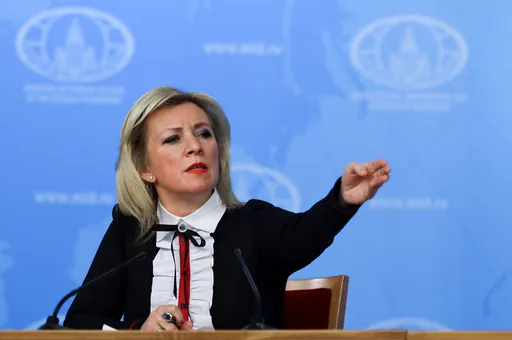In a surprising revelation made last month, Khalil Sediq, Governor of the Central Bank of Afghanistan, the war-torn nation’s topmost banking authority, admitted that hundreds of thousands of dollars in US currency are being smuggled into the bordering country of Iran, which is currently facing US sanctions.
Sediq, who recently resigned and is on his way out, asserted: “Dollars are being smuggled to Iran in trucks, taxis and even through individuals on foot.”
Afghanistan shares a relatively porous border with Iran, and is often used by Afghan migrants and refugees to escape the increasing conflict.
Aimal Hashoor, the spokesperson at the Central Bank of Afghanistan, confirmed to TRT World that they were aware that smuggling of the currency did take place on Iran’s borders, adding however, that they have little control over what goes on at the frontiers.
“Yes, we do believe that money is being smuggled but I want to add that Central Bank of Afghanistan has no authority over Afghan borders and we don’t have intelligence or spies to confirm or deny to you which country or how much money is being smuggled,” Hashoor said. As per border laws, Afghans are allowed to carry about $10,000 while travelling abroad.
However, Khan Afzal Hadawal, former deputy governor at the Central Bank, has a different take on why illegal cash smuggling might seemed to have increased in the past year. In an interview with TRT World, he traced the trickled-down impact the US sanctions on Iran has had on Afghan businesses. Earlier last year, US President Donald Trump applied sanctions on the state, leading to the fall of Iran’s currency by over 40 per cent.
“US has allowed Afghanistan and a few other countries some exceptions to continue essential trade with Iran. However, there are no exceptions on the banks channels when it comes to dealing with Iran. So then how are businessmen supposed to pay their Iranian counterparts?” he said.
Hadawal explains that the large amounts of cash that are being reported crossing the border is very likely the amount that was already owed to Iran. He also argued that this should not have affected the Afghan currency. “Sure, if businessmen are carrying large amounts of cash across the border it is illegal and for all intents considered smuggling, but there are no other channels for them to use, and the sources of this cash is legitimate,” he insisted.
Sanctions on Iran have already changed the trade and businesses in the region. Despite exceptions, the sanctions have already affected the Chabahar port project, with India having recently announced budget cuts to the funding by almost two thirds. Afghan banks are already hesitant to provide credit to Afghan shipments in Chabahar, disrupting businesses.

An Afghan street vendor sells samosa during celebrations for Nowruz, the Persian New Year, in Kabul, Afghanistan, Thursday, March 21, 2019. Nowruz is celebrated on the first day of spring in countries including Afghanistan, Tajikistan, and Iran. (AP)
This, compounded with Iran’s quickly drying-up foreign reserves, have led Afghan economist Dr Mohammad Najeeb Azizi to believe that smuggling of cash across the border has been encouraged in the past year.
“It is not a new story that dollar is smuggled out of Afghanistan; however, this time the magnitude is titanic and thus a serious concern,” said Azizi, who has studied the post-Taliban Afghan economy in various academic and official capacities.
“[Iran] is desperate for foreign currency in particular, the US dollar. Added to this, the lack of proper policies by Afghan central bank, and unchecked and mismanaged borders, encourage this,” he added.
Azizi also pointed out that while the problem has escalated since the new sanctions, Iran already had issues conducting businesses with foreign partners due to lack of corresponding banks in their own country.
“There were problems as far back as 2014, even before the Iran deal, they could not secure correspondent banking facility from the financial institutions. Essentially, it means that foreign investors could not transfer their profit out of Iran, making them less likely to invest,” he explained.
Afghanistan, however, continued to trade with Iran, and is one of its largest partners with imports to Kabul touching close to $2 billion. Both countries have attempted to develop systems of alternative payment with little success, Azizi said. The new sanctions have certainly not helped the situation.
It’s not just Afghan experts, but also local businesses that believe the smuggling of US currency has impacted the afghani currency, which has seen a steep downward trend in value in recent months. Yama Jan, 29, who sells currency on the streets of Kabul, has felt the hardest blow owing to the proximity of his business to the growing financial turmoil. Jan, who has been working on Kabul streets for 13 years, makes between $30 to $50 per day exchanging currency, along with sale of sim cards and phone top-ups. It isn’t uncommon to find several hundred such currency exchangers on the streets of Kabul, with large wads of cash.
The tumultuous financial storm has affected Jan’s daily income. “We do get affected on a daily basis, like when Afghan currency is losing its value, people try to keep dollars with them, and wait till they can seek most profit. Or they only exchange US dollars in smaller numbers just enough to support their life,” Jan explained, adding that the uncertainty of the value of the afghani has increased risks in his business, and there are days he goes home without making any money and sometimes even losses.
Azizi pointed out that the nature of the Afghan economy —being import-based due to lack of industries — would result in it being the first casualty of currency smuggling. Afghanistan continues to be heavily dependent on international aid, which is transacted in US dollars, a currency that is also widely available and used in Afghanistan alongside their own Afghani.
“Afghanistan is an import-based economy and for most of the goods we have to make payments in dollars; whereas the income of citizens are in afghani currency. Therefore, the devaluation of the afghani will decrease the purchasing power of Afghans due to inflated prices. Ultimately, it is a major concern to the common Afghan,” he warned.
Indeed, the impact of the falling afghani has been felt across markets in the conflict-ridden country, where such financial dynamics sometimes get chalked off to the ongoing violence. The cost of essential goods has shot up, putting a strain on the common man.
“Earlier, I would buy a bag of rice for AFN 1,900 but now the same bag of rice cost AFN 2,500-2,600,” Jan said, the stress of his job evident in his voice.
Meanwhile, Hashoor assured that the Central Bank was working to boost the currency.
“Three times a week, we sell US dollars in the market to take the extra afghani out of the market so as to keep the afghani value stable,” he informed. But the question remains, whether this fresh, weekly inflow of dollars remains within Afghan markets, or is quietly sneaked across the border.




























